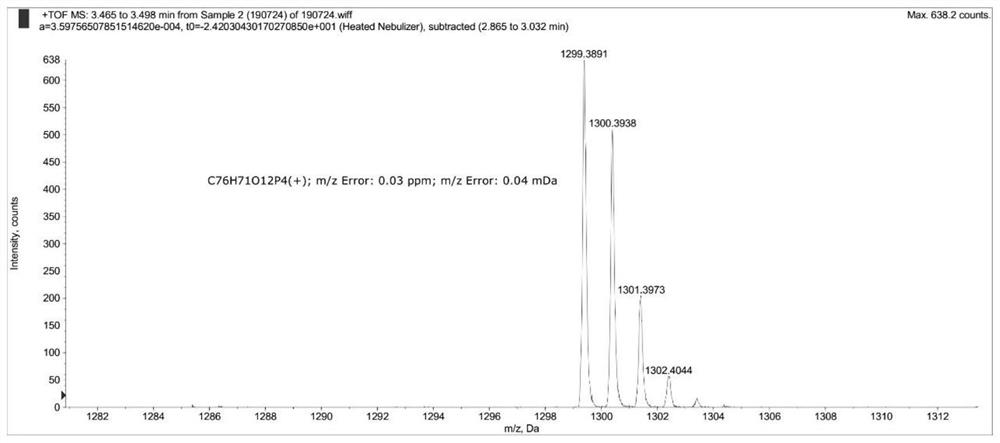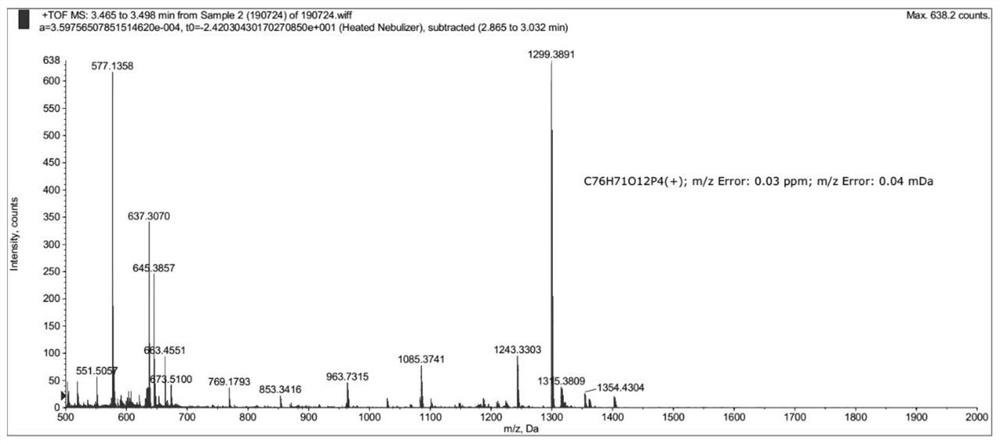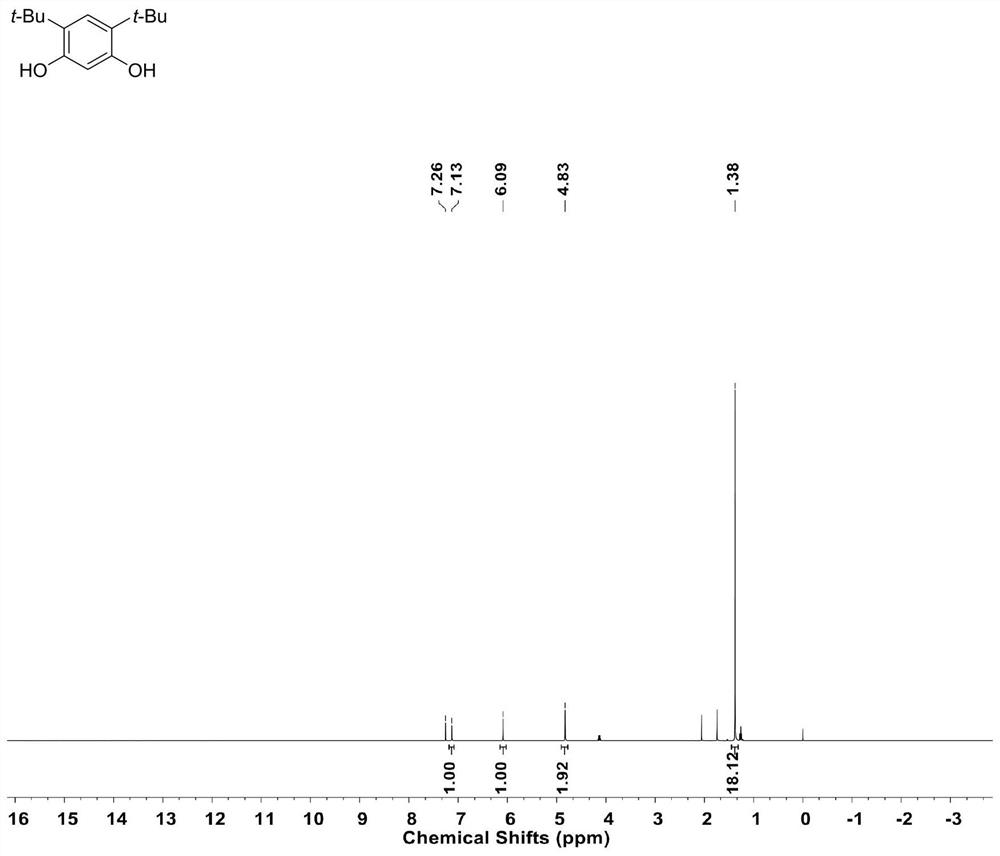Preparation of novel biphenyl tetradentate phosphite ligand and application of novel biphenyl tetradentate phosphite ligand in mixed/etherified C4 hydroformylation reaction
A technology of biphenyl tetradentate phosphonite and phosphonite, which is applied in the field of hydroformylation reaction and can solve the problem of high production cost of 1-butene
- Summary
- Abstract
- Description
- Claims
- Application Information
AI Technical Summary
Problems solved by technology
Method used
Image
Examples
Embodiment 1
[0027] Preparation of 4,6-di-tert-butyl-1,3-dihydroxybenzene (route 1 and 2):
[0028]
[0029] 1 (55g), tert-butanol (92.5g) and concentrated sulfuric acid (70g) were sequentially added into a 2L three-necked flask. After the addition was complete, the reaction bottle was replaced with a nitrogen atmosphere, and heated to reflux for 24 hours. The solvent was spin-dried under reduced pressure, 400 mL of water was added, and extracted three times with ethyl acetate (500 mL each time). The obtained organic phase was dried over anhydrous sodium sulfate and then spin-dried under reduced pressure, and the residue was subjected to flash column chromatography to obtain 88 g of the target product with a yield of 80%. The NMR spectrum of compound 2 ( 1 H NMR) see attached figure 1 . 1 H NMR (400MHz, CDCl 3 ): δ=7.13 (s, 1H), 6.09 (s, 1H), 4.83 (s, 2H), 1.38 (s, 18H).
Embodiment 2
[0031] Preparation of 4,6-di-tert-butyl-1,3-dimethoxybenzene (route 1):
[0032]
[0033] In a 2L four-neck round bottom flask, 2 (31.5g), iodomethane (101g), potassium carbonate (98.2g) and 0.5L acetone were added in sequence. The resulting reaction system was raised to 30° C. for 4 hours. After the resulting reaction mixture was concentrated, 400 mL of water was added and extracted three times with ethyl acetate (600 mL each time). The residue was subjected to column chromatography to obtain 30.5 g of the target product with a yield of 86%. The NMR spectrum of compound 3 ( 1 H NMR) see attached figure 2 . 1 H NMR (400MHz, CDCl 3 ): δ=7.17(s, 1H), 6.47(s, 1H), 3.83(s, 6H), 1.35(s, 18H).
Embodiment 3
[0035] Preparation of 2,2',6,6'-tetramethoxy-3,3',5,5'-tetra-tert-butyl-1,1'-biphenyl (Route 1):
[0036]
[0037]Add 25.0 g of 4,6-di-tert-butyl-1,3-dimethoxybenzene into a dry 1L Schlenk bottle, replace the reaction bottle with a nitrogen atmosphere, and add 100 mL of tetrahydrofuran and TMEDA at -78°C (14g). A 2.5M n-butyllithium solution (44 mL) was added dropwise thereto, and then, 100 mL of a tetrahydrofuran solution of iron trichloride (39 g) was further added. The resulting mixture was reacted at -78°C for 8 hours. After the reaction solution was quenched with water, 300 mL of water was added and extracted three times with ethyl acetate (400 mL each time). The obtained organic phase was dried over anhydrous sodium sulfate, and then spin-dried under reduced pressure to obtain a light yellow oil. Column chromatography obtained 5.0 g of the target product with a yield of 21%. The NMR spectrum of compound 4 ( 1 H NMR) see attached image 3 . 1 H NMR (400MHz, CDCl ...
PUM
 Login to View More
Login to View More Abstract
Description
Claims
Application Information
 Login to View More
Login to View More - R&D
- Intellectual Property
- Life Sciences
- Materials
- Tech Scout
- Unparalleled Data Quality
- Higher Quality Content
- 60% Fewer Hallucinations
Browse by: Latest US Patents, China's latest patents, Technical Efficacy Thesaurus, Application Domain, Technology Topic, Popular Technical Reports.
© 2025 PatSnap. All rights reserved.Legal|Privacy policy|Modern Slavery Act Transparency Statement|Sitemap|About US| Contact US: help@patsnap.com



